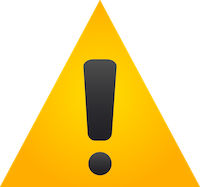What’s the big deal with version control?
Ever found yourself using an old version of a document, or perhaps faced with a number of different versions of the same document but weren’t sure which one you should be using?
That’s why you need version control.

Version control is used where there may be more than one version of a document or where there is likely to be more than one version in the future – which, let’s face it, is pretty much all of your client and staff handbooks, assessment and care planning templates and forms, policies and procedures, especially in light of Continuous Quality Improvement, so it’s important.
To demonstrate the importance of version control, let’s look at some all-too-common scenarios in aged care that could occur when version control is absent:
Scenario 1: You go searching for the client intake forms to assess and commence a new client, only to discover you have multiple versions, and you have no idea which is the right one.
Scenario 2: You provide a new Home Care Package client with a fees schedule only to discover that you have given them the old version and the prices have changed significantly. Now you have to explain to the client the difference in price and may need to modify their care plan and budget.
Scenario 3: You ask a team member to update the client handbook, only to find out they updated the wrong version and just wasted hours of their time.
Scenario 4: You signed up a new client on a Home Care Package, only to realise they signed an old version which is not compliant with new legislation. Now you need to ask them to sign off again, wasting your time and theirs and perhaps making you look less than efficient.
Scenario 5: You treat a Resident for a condition according to the medication management policy, only to discover that you are following outdated practices in a superseded policy. You’ve now opened your organisation up to criticism over medication management practices.
One of the things we do here at CDCS is develop tailored resources and we may have several team members working on the creation of one document or resource. For example, we often begin by developing a draft; this may be sent to another team member to get their input and is then sent to the customer for review. The customer sends feedback on suggested changes, or may request additional information to be added, which might get us thinking of something else that is needed. It’s a real iterative process that leads to a great outcome, but creates multiple versions of the document.
To help us keep on track we use a version control system.
There are a number of different version control systems that you can use. Really the most important thing to keep in mind is to identify one that works for your organisation or to follow the set process already in place in your workplace. While we will use our own internal file naming conventions for the draft phase of a document, we convert this to the organisation’s nominated file name convention once the document has been completed and is ready for use.
File naming and Document Footers
For example, the system we use is a to apply the word ‘DRAFT’ as our starting point, which means we will simply send out an initial document that we are seeking feedback on as ‘DRAFT’ in both the file name and the footer.
Future documents then can become either DRAFT-1, DRAFT-2, etc, or DRAFT-Date.
An alternative system is to use a system of numbers such as 0.1, 0.2 with the 0 indicating that this document is a draft only.
Once the document is in circulation the ‘0’ is replaced with the version number, e.g. V1 or V1.0.
Version Control on Updates
But what happens when you are drafting an update on an existing resource?
You can use a similar system to the above, where the first number indicates the original document you are working on and the second number denotes the draft revision number, e.g. 1.1, 1.2, 1.3 etc, until you have completed the revisions, at which point the version number changes to 2.0.
What if there are only minor changes?
Often we find that over time there are minor changes that need to be incorporated into a document. Perhaps we identify a better way of expressing something, there is a program or Departmental change of name or contact number, or we find a spelling error. These are minor changes in the scheme of things and our approach has been to view these as an ongoing continuous improvement exercise. In this situation we keep the first number the same as the current document and change the second number, or change the date, indicating that there has been a minor change that, while it doesn’t change the document, it was important enough to record. Again, every organisation is different and your organisation might have already defined their process for managing this situation so check with the responsible person.
Electronic Systems
For those using an electronic information / customer records management system (CRM), version control may be supported automatically, with permission and access levels set to manage who can make amendments. When users download a document instead of using it online – a warning message may be issued to advise that the version is only current at that time which acts as a reminder that this may not be a current version if found again at a later date.

However, electronic systems are not foolproof, settings need to be managed and process still needs to be communicated to users.
Version Control Documentation
Make sure everyone knows what version they should be using.
It is best to record any changes you make to your organisational documentation in a register or other document. It could be a word or excel format. This is a good way of demonstrating continuous quality improvement and is great for tracking who made changes and which is the most recent version you should be looking for. This is especially useful for policies and procedures and forms, as you want to make sure that everyone is using the latest version.
You may choose to include this register / document at the start or end of a policy manual or it may also be one of your registers.
The version control document should be updated each time a change is made to a document and usually notes the:
- new version number
- person making the change
- purpose of the change or the change itself
- date of the change
Managing old versions
That finally brings us to what to do with the old versions. What you don’t want to do is leave an old version laying around or stored where it can accidentally picked up and used.
This is especially important at the moment, given the amount of change in the sector and key transition dates, such as the commencement of the (new) Aged Care Quality Standards from July 2019 and change to the Charter of Rights. One example we have come across when doing a file audit is seeing an outdated Client Agreement form, used this year (2020), and still referring to ‘old’ Standards and the previous ‘Charter of Care Recipient’s Rights and Responsibilities’. On closer inspection of the version date – it was dated March 2019, so was probably not the ‘current’ form, but nonetheless had been printed off and used. It’s likely that this outdated version had been ‘left’ in the system and not archived, or multiple hard copies may have been printed off, put in an ‘Agreement Form File’ and not checked when templates were updated.
It’s best to physically archive old versions of documents or shred them. With electronic versions, where you wish to retain a copy, you should move the document into a folder that is labelled ‘archive’ so there is no confusion. If possible, you may also choose to watermark the document as ‘superseded’.
For those who have access to the CDCS Total Quality Package resource hub – you’ll find an ‘Archiving and Storage of Sensitive Information’ policy under the Service Management section.
Compliance with Aged Care Quality Standard 8
Information management is a key requirement under Aged Care Standard 8. There is an expectation that organisations will have systems in place to appropriately manage and maintain information and whether your ‘system’ is paper or electronic based, documents need to be organised and relevant, supporting your operational environment. Version control is one way of assisting you to manage your resources and demonstrates how you meet this Standard.
If you can think of someone else who might benefit from this article, please send them a link. We’d appreciate it! And if you’re looking for more helpful resources to keep your service or organisation compliant, why not check out our Total Quality Package resource hub? We have culturally appropriate, tailored resources that are designed to make your job simpler and help you provide quality care to your clients. Click here to find out more.
- What’s the deal with Care Coordination? - May 21, 2024
- When Cancer Gets Up Close and Personal… - May 14, 2024
- Aged Care Packages – what’s in the box? - February 16, 2024



